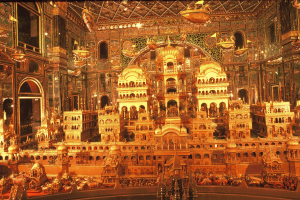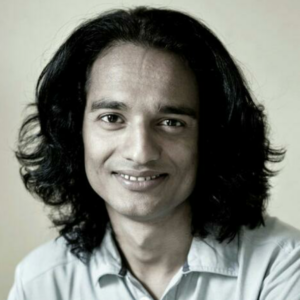
 By Kaushal Kishore*
By Kaushal Kishore*
The national capital has been witnessing a series of political moves centred around Ram Dhun and Ram Rajya long after the assassination of the Mahatma. It reflects the annual festivals of the Ayodhya Parva that started four years ago and continued with certain restrictions during the pandemic. This series of events started with the view of awakening public power to the zenith. After the 3 rounds in Indira Gandhi National Center for the Arts (IGNCA), at a corner of the Raisina Hills, it has now reached the Gandhi Darshan at Raj Ghat, close to the Yamuna.
In these four long years, lots of waters have flown, not only in the Saryu but in the Ganga and Yamuna as well. The 4th round of these festivities coincides with the holy season of Ramadan. On the last Hanuman Jayanti, it started and then continued for three days. The experts shared about Ram Raj from the life and works of Gandhi, the language of Ram Charit Manas by Tulsidas, and the historical peasant movement of the 20th century during different rounds of its sessions.
The nomenclature of Ayodhya Parva can help us to decipher its meaning and purpose. The etymology of the term refers to the state beyond warfare, something that Bapu seems to suggest with his nonviolence. If the people in these gatherings join together to bring the kingdom of God (Ram Rajya), it’s not impossible to imagine its result. Gandhi’s relationship with Ram Dhun and Ram Raj is well discussed in works of history. This series of celebrations are centred around these powerful thoughts.
The presence of the hateful content against Gandhi is in the fashion. This is one of those meaningful efforts that tried hard to answer the inflammatory contents of a series of the Dharma Sansad (parliament of religion) in the places like Haridwar and Raipur. They can learn from the saint representing Ayodhya, Mithilesh Nandini Sharan, in this festival, who has fascinated the birds of Raj Ghat. He seems to suggest that the fakir engrossed in the Ram Dhun and Ram Raj was an incarnation of Lord Rama. He has created the history against those trying hard to describe Gandhi as an incarnation of Christ and Buddha. As such he invites attention from different corners.
During this month of Ramadan, the hot communal atmosphere is dominating over the summer temperature of New Delhi. The extension of this violence from Kashmir valley and Bengal to the national capital indicates a very sad domestic condition. The people involved in realising the dream of Ram Raj need to prepare better to cope with this rising rift that created a deep chasm. In Gandhi’s time, there were a hundred leading public figures standing against it out there. In cases of violence and riot, the leaders like Ganesh Shanker Vidyarthi went ahead against the public involved in the violence.
This series of the Ayodhya Parva is held in a tense atmosphere, however, it has maintained a fair distance from the violence.
Four years ago, when this series of festivals started, a few people knew that the Supreme Court would decide the Ram Mandir case before the end of the year. However, those expecting such a verdict created the impeachment fiasco. At last, a five-judge bench paved the way for Shri Ram Janmbhoomi Tirth Kshetra (the temple trust) on 9th November 2019. The poets of Awadh were invited to express their views on all these things, and the dozens of artists camping there depicted on the canvas what they observed.
In this age of great tradition, it introduces the little traditions of Awadh. At this festival, one can learn many things related to art, culture and food, in addition to the philosophy. Definitely, it helps Delhi to improve, this kind of public awareness can be extended to the other parts of the nation as well.
Today the world faces difficult challenges in various fields. At this juncture, it’s necessary to understand the concept of Ayodhya which refers to the state beyond war and the message of Bapu’s life and works. As such it’s not beyond the expectations of the public figures present in these gatherings to address one of the complex challenges of the day with awakening the power that rests in the public.
*Kaushal Kishore is the author of The Holy Ganga (Rupa, 2008) and Managing Editor of Panchayat Sandesh, a monthly organ of All India Panchayat Parishad. The views expressed as personal.





